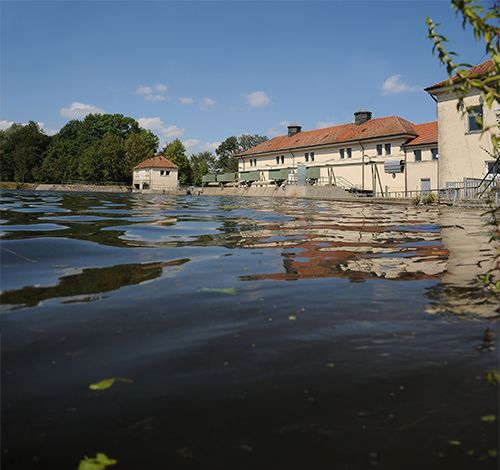Rolls-Royce Purchases Hydropower-Generated Electricity to Reduce Plant Emissions
The company is working with partners to increase the feed-in of renewable electricity for the Friedrichshafen, Augsburg, and Aiken/USA plants and their local grids.
Rolls-Royce signed a long-term power purchase agreement with Stadtwerke Ulm/Neu-Ulm (SWU): It will obtain approximately 20,000 MWh of CO2-free electricity over five years, generated entirely from the Donaustetten hydropower plant.
“Our hydropower plants have stood for clean and reliable energy for decades,” said Klaus Eder, Managing Director of SWU. “With this contract, we are helping Rolls-Royce to significantly reduce its carbon footprint. Such partnerships are essential to actively drive forward the transition to a climate-neutral economy.”
By using sustainable electricity from Ulm, Rolls-Royce reduces its total greenhouse gas emissions by around 7,000 tons annually.
Donaustetten hydropower plant; image credit: Rolls-Royce

“With this partnership, we are contributing to the local energy transition,” said Bernd Baader, Head of Engine Assembly Plants and Infrastructure at Rolls-Royce Power Systems. “And by sourcing electricity from hydropower, we are further increasing the proportion of renewable energy in our electricity mix, in line with our strategic goal of significantly reducing our CO2 emissions.”
The company is working with partners to increase the feed-in of renewable electricity for the Friedrichshafen, Augsburg, and Aiken/USA plants and their local microgrids. These grids are already equipped with photovoltaic systems connected to battery containers and combined heat-and-power plants, delivering efficient energy supply. In Friedrichshafen, two solar parks near the Rolls-Royce Power Systems headquarters have been supplying CO2-free electricity since 2022:
- Ilmensee (1.6 MWp)
- Tengen (3.6 MWp)
More Rolls-Royce News
Lats week, Rolls-Royce finalized the rollout of its upgraded mtu Series 1600 generator sets, delivering up to 40% more power than their predecessors. The latest release covers the 50 Hertz version, following the 60 Hertz variant introduced in late 2023. With electrical output ranging from 590 to 996 kVA, the new gensets are designed for a wide range of applications, including data centers, healthcare facilities, commercial buildings, and hybrid or microgrid installations.
The 50 Hz version features a power increase of up to 40%, reaching up to 1,000 kWm, making the 12V1600 Gx1 engine the highest power density option in its class. It delivers high load acceptance and maintains almost full power output in extreme environmental conditions, including high temperatures and humidity. Orders have already been placed for emergency power solutions across the U.S. and Europe, serving various sectors such as hospitals, entertainment venues, and ski resorts.
And in early February, Rolls-Royce successfully transformed retired Royal Air Force Tornado components into powdered metal for 3D printing as part of the Tornado 2 Tempest initiative. The recycled material has been used to create parts for the Orpheus small engine concept—Tornado components containing high quantities of titanium, including jet engine compressor blades from a low-pressure air compressor, were cleaned and atomized to create a 3D-printed nose cone and compressor blades.
The team then installed the 3D-printed nose cone onto an Orpheus test engine and successfully ran it at test conditions to assess the part’s suitability and safety. The project demonstrates how additive manufacturing supports next-generation combat aircraft, including the Orpheus-equipped Tempest platform, a core element of Rolls-Royce’s Grow Combat initiative and Future Combat Air System program.